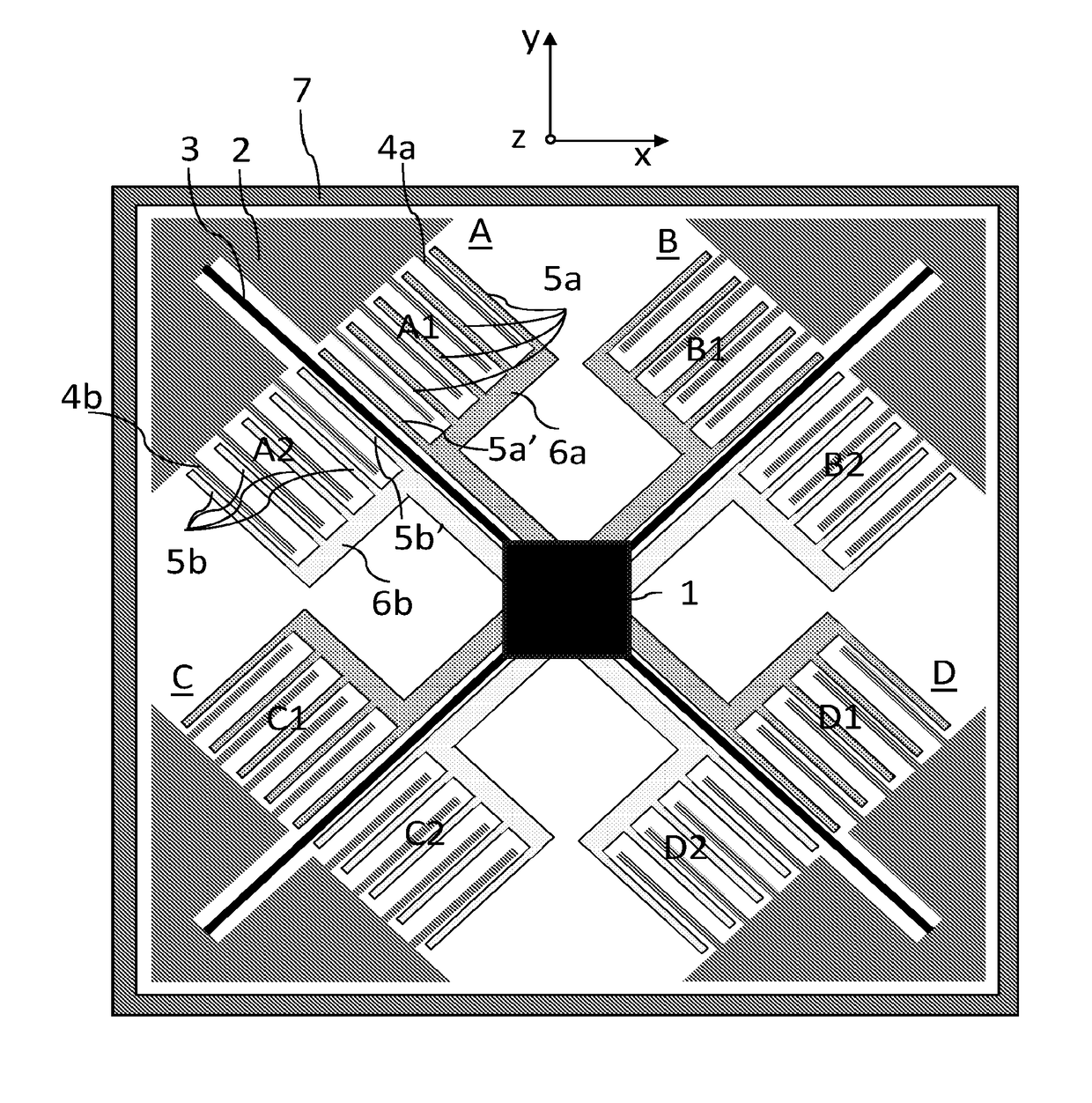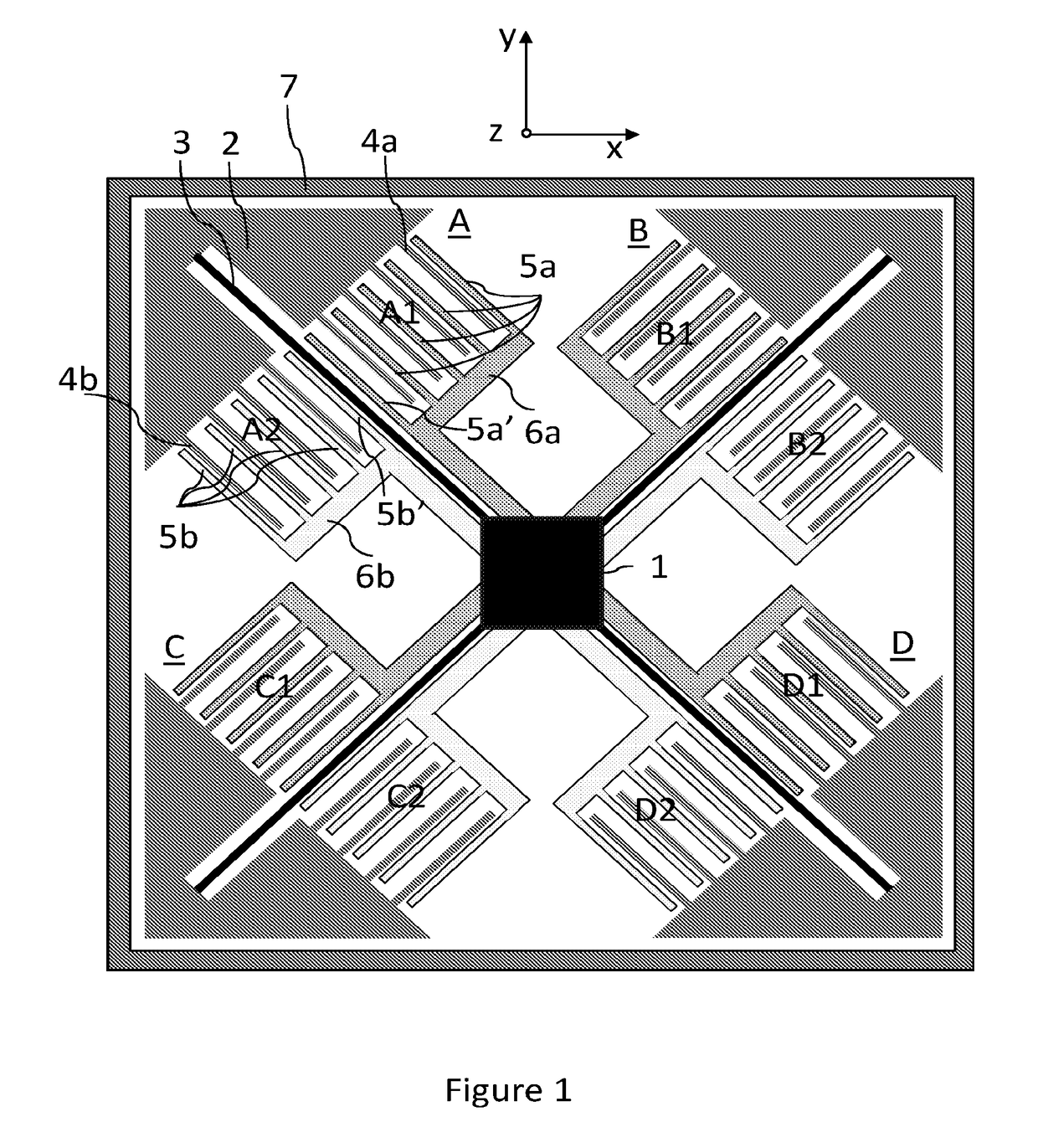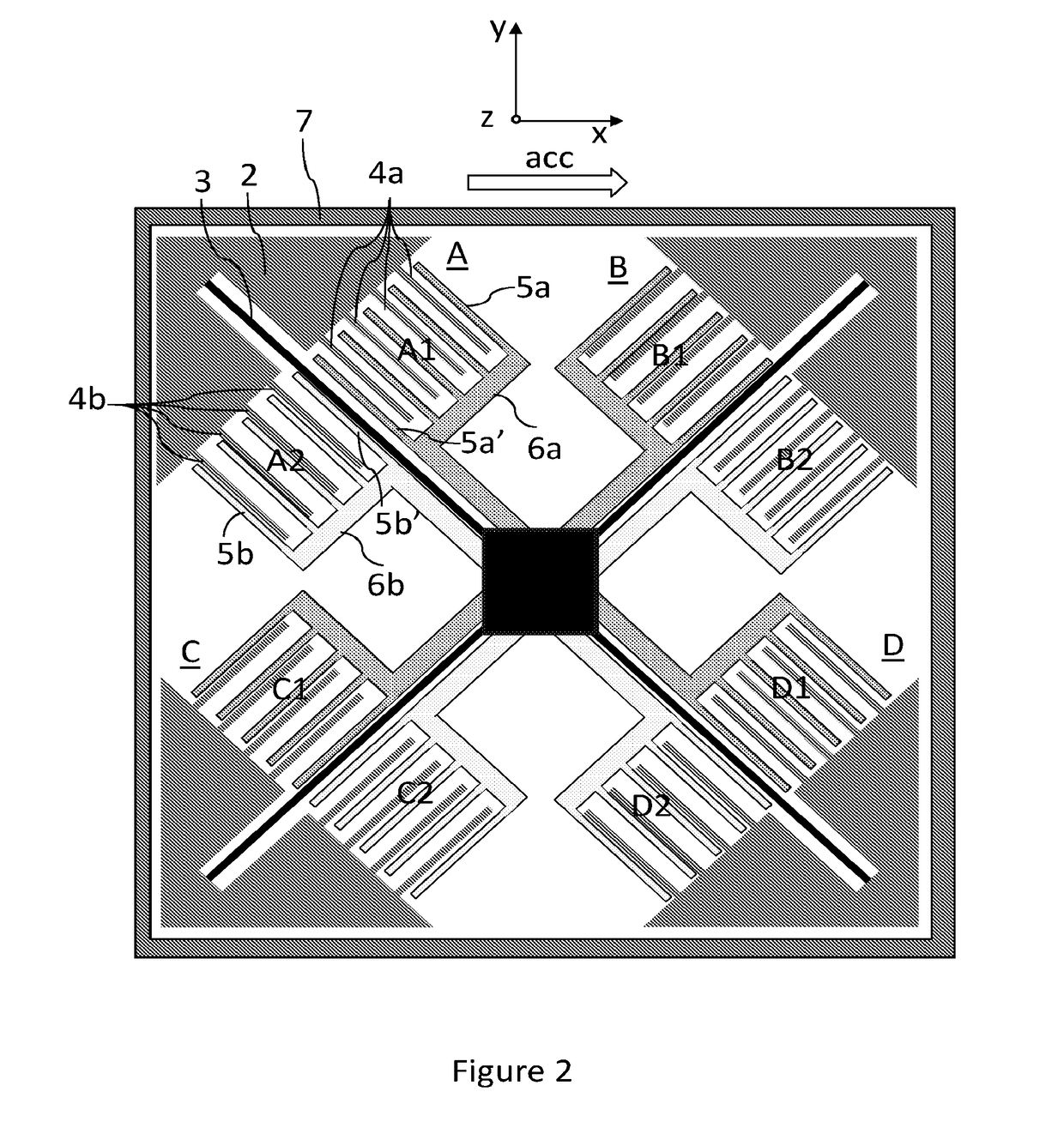MEMS sensor
a sensor and sensor technology, applied in the field of sensors, can solve the problems of device subject to common mode errors, imperfect self-compensation, etc., and achieve the effect of minimizing the amount of errors caused by mechanical stress
- Summary
- Abstract
- Description
- Claims
- Application Information
AI Technical Summary
Benefits of technology
Problems solved by technology
Method used
Image
Examples
first embodiment
[0055]FIG. 1 presents a two-axis MEMS sensor with four differential sensor elements (A, B, C, D) each having an oblique suspension axis with respect to the intended detection axes. As defined above, with suspension axis we refer to the longitudinal direction of the spring (3) suspending the movable rotor mass (2) to an anchoring area (1). Detection axes are intended to be in x- and y-axis direction. In this example, rotor masses (2) of all four differential sensor elements (A, B, C, D) have been suspended to a common anchoring area (1) located approximately in the geometrical center (centroid) of the MEMS sensor, this way ensuring that in case any mechanical stress from package would exist, all four sensor elements (A, B, C, D) would be subject to similar stress, which may thus be compensated utilizing differential detection provided by the sensor elements (A, B, C, D). The common anchoring area (1) is a relatively small area within the total area of the MEMS sensor in xy-plane, and...
third embodiment
[0073]FIG. 6 presents the invention, in form of a one-axis MEMS sensor. This sensor is capable of detecting acceleration / inclination along x-axis. Same principle of suspending the sensor elements in one common anchor structure (1) is used as in the earlier examples: the anchoring area (1) is common to all sensor element structures, but this area may comprise one or more anchor structures disposed at or near the geometrical center of the MEMS sensor, each anchor structure supporting one or more sensor element structures. This arrangement is more traditional if compared with the first two embodiments in the way that now the direction of suspending springs (3), in other words the suspension axis is now orthogonal with the detection axis (x-axis).
[0074]This MEMS sensor has same parts as the earlier embodiments, namely a common anchoring area (1) supporting two sensor elements (A, D). Each sensor element has a rotor structure (2) flexibly suspended to one or more anchor structures locate...
sixth embodiment
[0077]FIGS. 8 and 9 illustrate a fifth and a sixth embodiment in form of a two-axis MEMS sensor. Now the detection axes are x-axis and y-axis, and each pair of sensor elements arranged to detect either of these directions differentially are suspended orthogonally in view of the respective detection axes. Suspension axis of each sensor element (A, B, C, D) is orthogonal to the detection axis of the same sensor element (A, B, C, D). Sensor elements A and D are arranged to detect acceleration / inclination in x-axis direction and sensor elements B and D are arranged to detect acceleration / inclination in y-axis direction. As in all earlier embodiments, all four sensor elements are suspended by long springs (3) to a common anchoring area (1) arranged at or in the vicinity of the geometrical center of the entire MEMS sensor. Again, arranging single common anchor structure or more than one anchor structures may be arranged at the common anchoring area (1) in the vicinity or at the geometrica...
PUM
 Login to View More
Login to View More Abstract
Description
Claims
Application Information
 Login to View More
Login to View More - R&D
- Intellectual Property
- Life Sciences
- Materials
- Tech Scout
- Unparalleled Data Quality
- Higher Quality Content
- 60% Fewer Hallucinations
Browse by: Latest US Patents, China's latest patents, Technical Efficacy Thesaurus, Application Domain, Technology Topic, Popular Technical Reports.
© 2025 PatSnap. All rights reserved.Legal|Privacy policy|Modern Slavery Act Transparency Statement|Sitemap|About US| Contact US: help@patsnap.com



